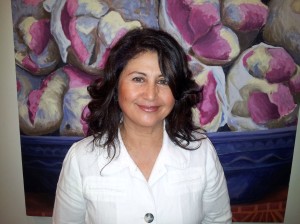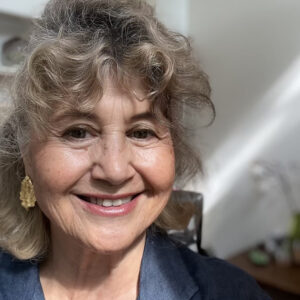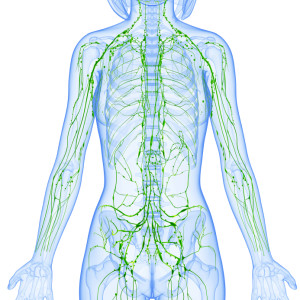What to expect during a lymphatic massage?
- A history is taken at the beginning of each appointment so the treatment can be correctly tailored to your particular needs.
- A treatment lasts up to 60 minutes.
- Most of the major lymphatic sites are gently worked upon, although this will depend on the person’s symptoms and requirements. Lymphatic massage is light and gentle, and a person can expect to feel comfortable and relaxed.
- As toxins are aided to leave the body, increased urination after a treatment is a healthy by-product. Most patients feel ‘lighter’ in body with an increase in energy. If a person is detoxing, there may be a temporary increase in skin outbreaks or nausea as the stimulated liver flushes out extra toxins. Drinking more water aids this natural process.
How often should I have Lymphatic Drainage Massage?
- This depends on the person’s need to have lymphatic drainage and a treatment plan can then be decided upon.
- This may be weekly for a month or several more sessions or intermittently for maintenance, once a person’s issue shows improvement and/or symptoms are suitably reduced.
The Healing Practice
7 Albert St
Forest Lodge (Glebe)
NSW 2037.
By appointment only.
Lymphatic Massage Therapist
Claire Cleaver

Claire Cleaver is trained in Massage and other types of bodywork and has specialised in various areas including lymphatic manual drainage. Her approach is holistic and recognises that massage has many benefits including boosting the person’s endorphins which helps a person to recover and to overcome pain.
Lymphatic Drainage Massage assists with:
- Lymphoedema
- Children with respiratory conditions
- Pregnant or Postnatal women with oedema (fluid retention)
- Postnatal recovery
- After a miscarriage
- Menopause or hormonal alterations and disturbances
- Post-surgical operations
- Cancer Treatment (such as breast cancer)
- Elderly people suffering with oedema
- Chronic fatigue syndrome
- As part of a ‘Detox’ health plan (such as dietary or ‘stop smoking’)
- Immune system deficiency
- Clears chronic sinuses and recurrent ear problems.
- Eases arthritis.
- Assists in the recovery of glandular fever and other post virus conditions.
- Long-Covid
- Cellulite
What is Cellulite?
Cellulite occurs when underlying fat deposits begin to push through layers of collagen fibers, or connective tissue, under the skin (often in the buttocks and thigh areas, but also on arms, stomachs, and other common trouble spots, as well).
Facts about Cellulite
- Connective tissue can be weakened by hormones (reduced estrogen causes a decrease in new collagen production and the breakdown of older connective tissue), lack of exercise and muscle tone, excess fat, and poor circulation.
- It is also hereditary. So if your mother had it, you are more likely to get it as well
- 90% of women, at some stage in their life get cellulite, as opposed to 10% of men
- Women are designed to carry extra fat deposits for the work of pregnancy and the early postnatal period
- Even skinny women and ‘super-models’ get cellulite
- Even super-fit women get cellulite
- It’s true that cellulite is more noticeable on overweight women because the extra fat tissue under the skin pushes cellulite outwards
- It’s true that ageing can cause more cellulite to appear as a natural progression of ageing
- Cellulite looks dimpled and lumpy in appearance
- Cellulite is actually normal!
What you can do about cellulite
The best tips for reducing cellulite formation is the same stuff you are probably doing if you are embarking on a healthy living pathway. If you are not there yet or are considering it, here’s some simple tips to get you started along that pathway.
- The first step is to create your goal (e.g. getting healthier for a particular reason, losing weight for a particular reason, going on an event re fitness or attending a wedding, etc). It’s important to get specific about what your end-goal is, as getting healthier is too broad and loose. It can be easy to lose your way with just getting healthier.
- The second step is having that end-goal in sight of 4 weeks or 4 months or whatever the timeframe is, and working out what you need to do re achieving that goal. A plan that is a combination of improved nutritional goals, rest and sleep hygiene and exercise is going to deliver you sustainable results. Once that plan is started, you will find that the extra cellulite will shed itself along the way.
- The third step is to do the plan
Tips to help you stay on your treatment plan
- Drink more water
- Eat more green, leafy vegetables
- Eat good food and get rid of the junky stuff especially sugar as the excess converts to fat stores!
- Reward yourself with healthy treats so your mind and body can appreciate the difference
- Exercise in whatever way works for you, starting small and enjoying your exercise
- Lose weight, lose fat
- Having good ‘sleep hygiene’ (what’s that? at least 7-8 hours every night)
- Having a good ‘rest hygiene’ (what’s that? nurturing activities that are restful and restorative)
The lymphatic system has multiple interrelated functions:
- It is responsible for the removal of interstitial fluid from tissues in the body
- It absorbs and transports fatty acids and fats as chyle from the digestive system
- It transports white blood cells to and from the lymph nodes into the bones
- The lymph transports antigen-presenting cells (APCs), such as dendritic cells, to the lymph nodes where an immune response is stimulated.
What is the Function of the Lymphatics?
The lymphatic system is part of the circulatory system, comprising a network of thin tubes (lymph vessels) that are found throughout the body, and in a number of organs, such as the spleen, liver, thymus gland and bone marrow. The lymph vessels transport a clear fluid called lymph, directionally toward the heart. The vessels carry lymph to the various lymph nodes for ‘processing’.
What are T- and B-cells?
The lymph nodes are major sites of T- and B- cells and other immunity cells. T- and B- cells are highly specialised defender cells and are tailored to different germs. When your body is infected with a particular germ, only the T-and B-cells that recognise it will respond. These selected cells then quickly multiply, creating an army of identical cells to fight the infection. Special types of T- and B- cells ‘remember’ the invader, making you immune to a second attack.
Lymph Nodes
Lymph nodes act as filters or traps for foreign particles and are important in the proper functioning of the immune system. They are packed tightly with the white blood cells called lymphocytes and macrophages.
Lymph nodes also have clinical significance. They become inflamed or enlarged in various infections and diseases which may range from trivial, such as a throat infection, to life-threatening such as cancers. In the latter, the condition of lymph nodes is so significant that it is used for cancer staging, which decides the treatment to be employed, and for determining the prognosis. When swollen, inflamed or enlarged, lymph nodes can be hard, firm or tender.
Lymph nodes are not involved in the body’s system for dealing with toxicity which the liver and kidneys deal with. The lymphatic system is structured to address biological infections, as well as biological breakdowns or errors within the body, as in the response to cancer.
Movement makes the lymphatic system work
The lymphatic system depends on peristalsis (propulsion of the lymph due to alternate contraction and relaxation of smooth muscle, as in normal digestive function and internal movement ), and the movement of skeletal muscles (as in natural movement of the body) to propel lymph back to the cardiovascular system.
The circulatory system processes an average of 20 litres of blood per day through capillary filtration which removes plasma while leaving the blood cells. Roughly 17 litres of the filtered plasma actually get reabsorbed directly into the blood vessels, while the remaining 3 litres are left behind in the interstitial fluid.
The primary function of the lymph system is to provide an accessory route for these excess 3 litres per day to get returned to the blood. Lymph is essentially recycled blood plasma but is protein poor.
Massage products for Lymphatic Drainage?
Most massage oils can be used although it is fair to say that cold-pressed and organic processed oils / balms etc are better for any skin application, and more so when stimulating a compromised lymphatic system for whatever reason.
Meet Claire schedule introductory phone call Find out how she can help you.
Mobile 0438 216 351
Health Fund rebates are available depending on your level of coverage. Process your HICAPS claim on the spot and we accept payment by cash, eftpos, credit card and online transfers.
Testimonials to check out what our other clients say about us
Cancer and Massage
- Often people worry that massage is contraindicated for various cancers and is likely to increase the cancer. This is not the case. Research shows that cancer develops and spreads because of changes to a cell’s DNA (genetic mutations) and other processes in the body.
There are many reasons to have massage during all stages of cancer. Direct massage should generally be avoided on tumours or treatment sites, primarily to avoid discomfort to the person or put pressure on the affected area and underlying organs. However, certain cancers such as Hodgkins Lymphoma, which is a cancer of the lymphatic system may require a different approach.
Lymph Nodes and Cancer
- The central role played by lymph nodes in filtering micro-organisms and other undesired substance from the blood is critical to the functioning of the immune system, but also makes lymph nodes vulnerable to cancer. A
- s cancerous cells spread by metastasis (most commonly develop when cancer cells break away from the main tumor and enter the bloodstream or lymphatic system. These systems carry fluids around the body.
- This means that the cancer cells can travel far from the original tumour and form new tumours when they settle and grow), they can become trapped and concentrated in lymph nodes, where they can increase rapidly. Virtually all cancers have the potential of spreading to lymph nodes, a condition that greatly complicates treatment.
- In most cases, surgery alone will not remove the cancer from the nodes, and therefore post-operative radiation for chemotherapy is required.
Selecting the right treatment for your type of cancer is important and it helps to take your time in choosing your oncologist to maximise your results and to minimise side-effects from radiotherapy, chemotherapy and other drugs.
https://www.cancer.net/cancer-types/breast-cancer/treatment-options
The thymus gland and spleen are important in the function of the lymphatics
The thymus gland acts to regulate the immune system by immune cell production and producing hormones that promote growth and maturation. Thymic hormones influence structures of the endocrine system, including the pituitary gland and adrenal glands, to assist in growth and sexual development. The thymus and its hormones also influence other organs and organ systems including the kidneys, spleen, reproductive system, and central nervous system.
The Spleen organ plays multiple supporting roles in the body. It acts as a filter for blood as part of the immune system. Old red blood cells are recycled in the spleen, and platelets and white blood cells are stored there. The spleen also helps fight certain kinds of bacteria that cause pneumonia and meningitis.
The Healing Practice
7 Albert St
Forest Lodge (Glebe)
NSW 2037.
By appointment only.

Claire Cleaver, Owner and holistic Therapist of The Healing Practice In Sydney
Find out how The Healing Practice can help you Schedule an introductory phone call now!
Health Fund rebates are available depending on your level of cover.
Process your HICAPS claim on the spot and we accept payment by cash, eftpos, credit card and online transfers.
Gift Certificates are also available
Comments check out what our other clients say!
The Healing Practice
7 Albert St
Forest Lodge (Glebe)
NSW 2037.
By appointment only.

Introductory phone call. Give The Healing Practice a call to find out how we can help. We offer a 20 minute introductory call for you to outline your concerns and the kind of help that you would like to get.
0438 216 351.

